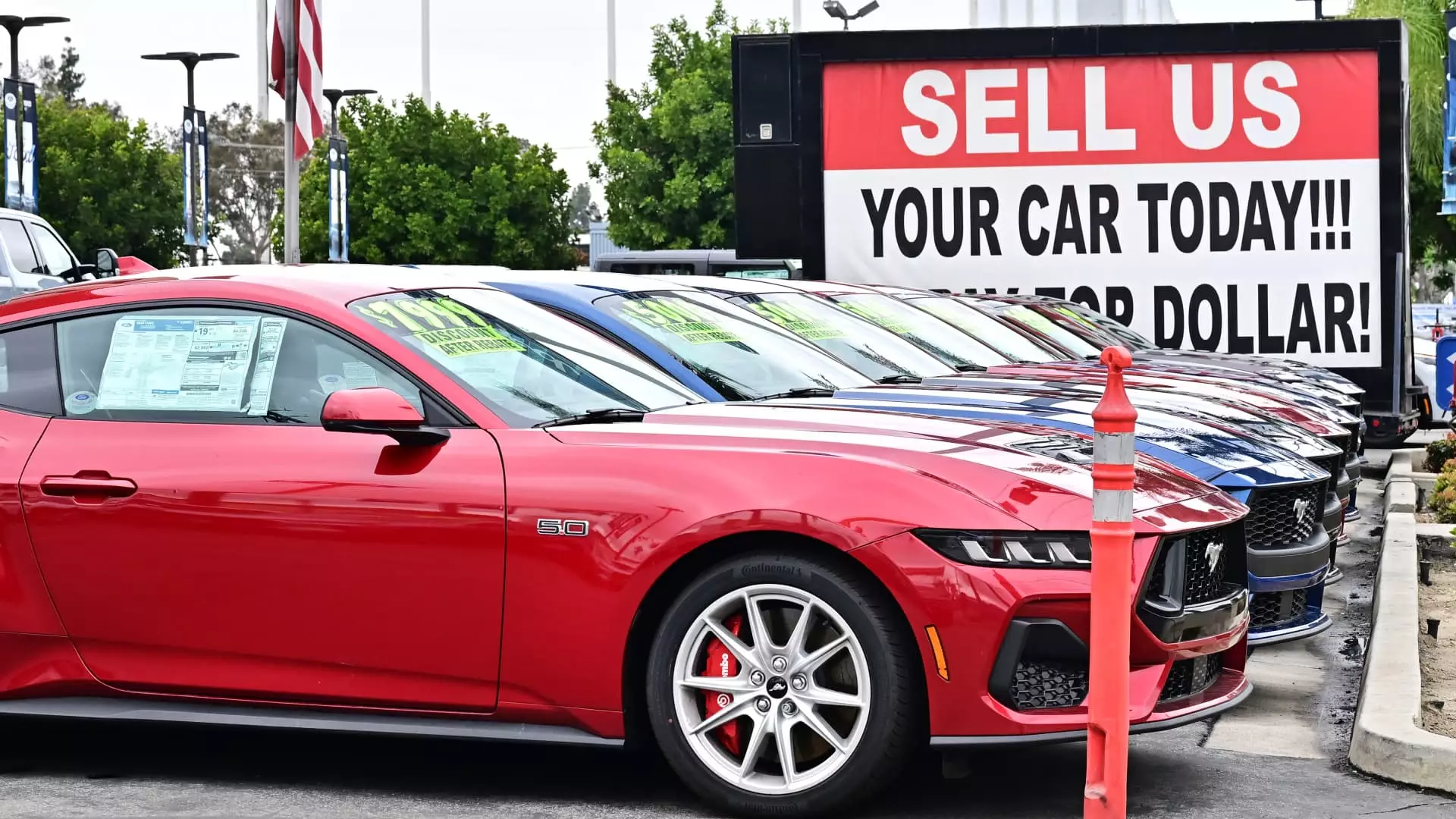The fluctuations in used vehicle prices have become a focal point of economic discussion, especially as they seem to mirror broader economic sentiments. Recent data from Cox Automotive reveal that the Manheim Used Vehicle Value Index experienced a slight drop of 1.5% from April to May, reflecting a necessary adjustment after April’s record highs—the highest registered since October 2023. This decline may seem benign on the surface, but it indicates a precarious balance in a market previously characterized by thrilling rides of valuations. Just a year ago, prices surged by 4%, reflecting sustained consumer demand and a market that hadn’t caught its breath since the economic upheavals of the pandemic.
The Shadow of Tariffs and Supply Chain Issues
Digging deeper, one cannot ignore the pervading influence of President Trump’s tariffs on new vehicle imports, which have inadvertently cast a long shadow over the used car market. While the tariffs explicitly target new vehicle sales, their ripple effects create a frenzy in demand for used vehicles, thus artificially inflating prices. This is a classic example of how government policy, intended to safeguard domestic manufacturing, can complicate the consumer landscape. With inventories standing at only 2.2 million—a stark contrast to historical norms—cars are scarce, and scarcity breeds competition, driving prices upward.
The Consumer’s Dilemma
Consumers are now engulfed in a dilemma; faced with an uncertain economic climate and struggling supply chains, they are caught in a predicament where holding onto their vehicles longer seems pragmatic. The automotive ecosystem is tangled in a web of reduced production and stretched supply chains exacerbated by the ongoing complications from the coronavirus pandemic. It’s worth noting that retail used vehicle sales dipped by 3% in May compared to April; however, they still buoyed above last year’s figures by 4%. This juxtaposition speaks volumes about consumer behavior, reflecting hesitance that stems not merely from pricing but from an overall economic conservatism in the face of volatility.
A Market in Transition
Amidst this turmoil, it is vital to observe how the consumer sentiment shifts. The phenomenon of consumers flocking to the used car market, initially propelled by fear of impending price hikes due to government actions, highlights a growing disenchantment with conventional vehicle ownership narratives. Herein lies a broader commentary on capitalism itself: as prices soar due to policy-induced inflation, the very system intended to stabilize through free market principles shows signs of strain. The current trends may not merely characterize a market correction but could represent the beginning of a seismic shift in consumer priorities and purchasing habits.
In essence, as the used car market navigates this unstable terrain, it forces us to reflect critically not only on the economic indicators but also on what they mean for the average consumer. While the stabilization of prices seems promising, beneath the surface lies an ecosystem struggling to find equilibrium in a landscape forever altered by policy decisions and global events.

